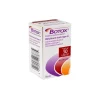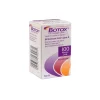Pharmacovigilance
Pharmacovigilance refers to the science and activities relating to the detection, assessment, understanding and prevention of adverse effects caused by medicines or any other medicine-related problem. The European Medicines Agency (EMA) coordinates the European Union (EU) pharmacovigilance system and operates services and processes to support pharmacovigilance in the EU.
Before a medicine is authorised for use, evidence of its safety and efficacy is limited to the results from clinical trials, where patients are selected carefully and followed up very closely under controlled conditions. This means that at the time of a medicine’s authorisation, it has been tested among a relatively small number of selected patients for a limited length of time.
After authorisation the medicine may be prescribed to a large number of patients, for a long period of time and alongside other medicines. Certain unanticipated side effects may emerge in these circumstances. It is therefore essential that the safety of all medicines is monitored throughout their introduction and general use in healthcare practice.
EU law therefore requires each Marketing Authorisation Holder, national competent authority and EMA to operate a pharmacovigilance system. The overall EU pharmacovigilance system operates through cooperation between the EU Member States, EMA and the European Commission. In some Member States, regional centres are in place under the coordination of the national competent authority.
Typical product lifecycle activities include:
- Medicinal product application for authorisation via the national health procedures
- Direct Healthcare Professional Communication (DHPC)
- Variations to patient information leaflets (PIL) and summary of product (SPC)including Common European Submission Portal (CESP) submissions
-Preparation of documentation for CESP submissions
- Printing and readability testing
- Communication with national health authorities on behalf of MAHs
- Regulatory Intelligence for Pharmacovigilance





